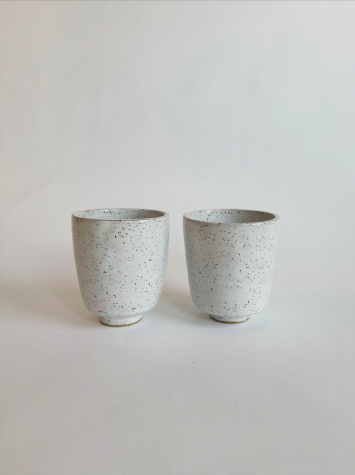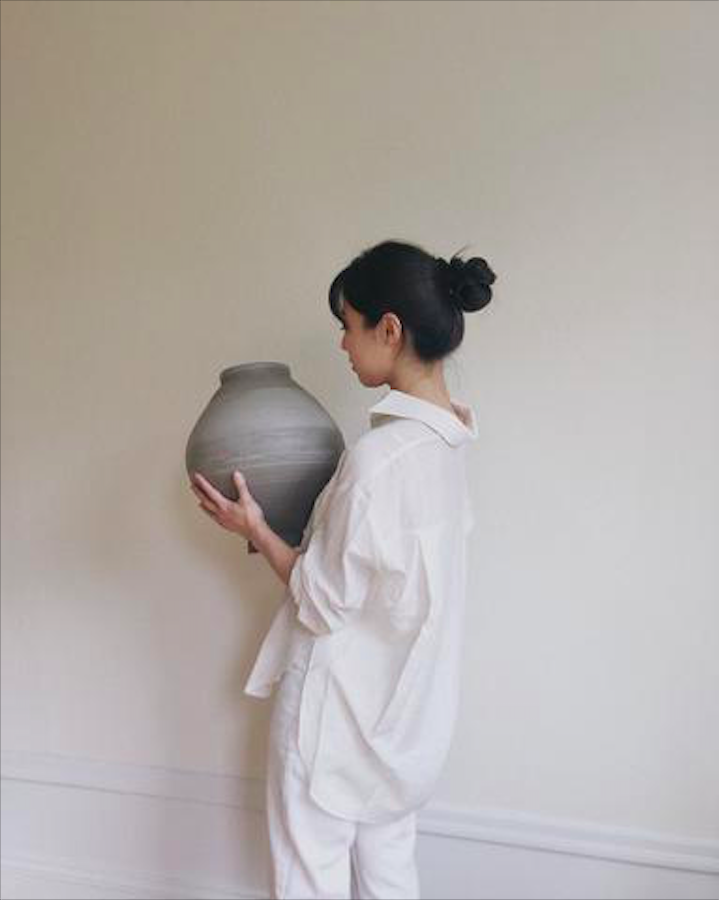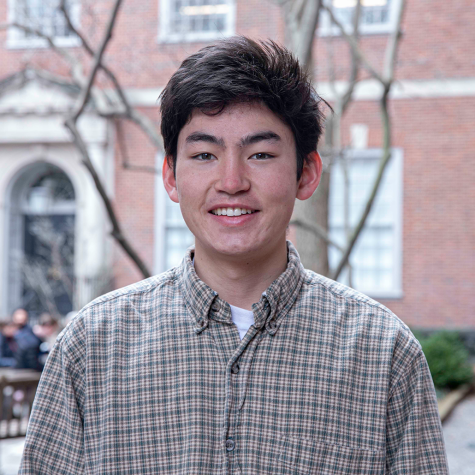Sophia Somin Yoo: A curator’s voice
The designer, ceramicist and art curator finds purpose in bringing new ideas into focus.
Yoo’s interest in aesthetic philosophy was a significant source of her inspiration in her crafts. (Photo courtesy of Sophia Somin Yoo)
October 22, 2021
As the COVID-19 pandemic forced independent art galleries to consider closing their businesses, curator and ceramicist Sophia Somin Yoo saw an opportunity to begin something new.
“It [began] during the pandemic, actually, when so much of the world was going into lockdown,” she said. “We were just feeling both claustrophobic and energetic about doing something that would stretch us creatively, but also be helpful to our friends and network.”
Thus began the story of Accessible Objects, a Brooklyn-based independent curatorial platform that celebrates the work of emerging creators through periodic online exhibitions. The organization showcases artwork in collections released on their website. It’s a project that has been informed by Yoo’s numerous creative vocations: Besides her career as a product designer, she also works as an art curator, ceramicist and interior design tastemaker on Instagram. Though these roles exist in separate spheres of her life, they all stem from the same place in her upbringing.
“Arts and creative activities have always been a part of my life,” Yoo said. “My grandfather was a painter, and I was always encouraged to use my imagination and stretch myself creatively. And so in college, I majored in art history, just given my interest in the humanities and aesthetic philosophy … I feel really grateful to be able to exercise so much of that today.”
The pandemic gave Yoo an opportunity to use her keen eye for design to promote the work of artists in her social and professional circles, a cause that formed the ethos of Accessible Objects. Between honing her craft as a ceramicist for eight or nine hours a day — a stunning feat on its own — she and Vadot released the platform’s inaugural edition as a way of giving a broader voice to thinkers and artists in her circle.
The “First Edition” of Accessible Objects set the tone for the project. In curating it, Yoo and her business partner, Chloé Vadot, looked to those in their network engaging with “nascent practices and experimental projects,” as the curator’s statement puts it.
Among these artists was “babyman studio,” from Rockland, Maine, whose sculpture “prayer” — a chunk of alabaster carved in oscillating degrees of finish to resemble a pair of cupped hands — stands out in its non finito approach to stone carving. More practically aimed, but no less artistic, is “Easy Man” by Izel Maras, a 3-D sculpture of a stickman designed to be used as an augmented reality companion for those enduring the pandemic alone.
The collection “exude[s] a sense of softness and definitive connection to nature, as a place where materials grow and become molded into art,” as written in the curator’s statement. While the works stand out on their own, the curatorial voice shared by Yoo and Vadot is clearly discernible in the attention to the various ways we define the word “object.” Curation, in their eyes, is an act of artistry.
“I think the act of selecting is in itself a decision,” Yoo said regarding the curatorial process. “When an artist creates work, every creative act they do to make something come into being is a decision that they either consciously or unconsciously exercise in that moment. And I think curation can be very much the same way.”
Accessible Objects pulls together the overlapping tastes of its two founders to make its own articulate style, which she defines as an “expression of what we think to be important to our moments, or interesting about our friends, that we want to share with the world.”
Beyond Yoo’s and Vadot’s creative voice, the platform distinguishes itself through its online location. While many brick-and-mortar art galleries could not foster artistic dialogue during the pandemic, Accessible Objects functioned in the short term as a place to showcase and view emerging creators online. In the long term, the platform aims to use the same internet-driven structure as a more practical way of cultivating engagement with art in the internet era.
Yoo was quick to point out that this goal is manifested in the platform’s name, Accessible Objects.
“The two words actually play really tightly together,” Yoo said. “Our approach to this platform was to really ensure that it is accessible in all the ways that that word can be used — for creators, in helping them access a broader audience and getting their work out there, but also for audiences to access really interesting new ideas and innovative creations to enrich their own lives.”
The word “object” is also crucial to the ethos of the platform, which doesn’t conform its creators to any boundaries. To an artist — especially one whose practices and projects are experimental — there’s something very comforting in the broadness of “object,” a term that doesn’t impose preconceived limitations on creative work.
Besides her curatorial work through Accessible Objects, Yoo also takes comfort in this definition as an artist herself. In the past few years, her identity as a ceramicist has grown from a hobbyist to a serious, independent artist producing commissioned work. Although she sees ceramics and curation as different practices, they both occur at the intersection of people and objects.
“At the end of the day, a lot of [my work] is about my relationships with other people and also my desire to help other people, both for Accessible Objects and for ceramics,” Yoo said. “Accessible Objects is digital and intangible in the ways that we interact with it right now. Ceramics has been a physical medium for me to just connect with my own physicality and the physicality of the clay.”

Yoo’s creations — some of which can be found on her website — are of an enviable simplicity. The minimalist, elegant products of her practice are featured on her studio’s Instagram account, a window of sorts into one of the great joys of her life.
All Yoo knows about the future of Accessible Objects is that she wants her creative, people-driven spirit — the same one channeled in her ceramics work — to continue to define the platform. Yet when asked about the future of the platform, she had an open-ended perspective.
“Chloé and I are open to where this platform organically grows,” she said. “I think we are excited to just put together our third and our fourth editions and see how those editions and those objects are conversing with editions from the past.”
Though Accessible Objects’ identity may take a new shape in the future, Yoo’s motivation for contextualizing the objects that fascinate her will undoubtedly stay the same. Her aim as a curator is eloquently summarized in the platform’s most recent edition, a passage that gives us something to think about as we wait to see what Accessible Objects does next.
“The stories that each object narrates are endless, subjective, delicate, transformative,” Yoo said. “We invite you to dig into them, to take time with each of them, to think of where they’ve come from, where they are, and where they will go.”
For more of Yoo’s work, visit Accessible Objects’ archive.
Contact JP Pak at [email protected].



























































































































































